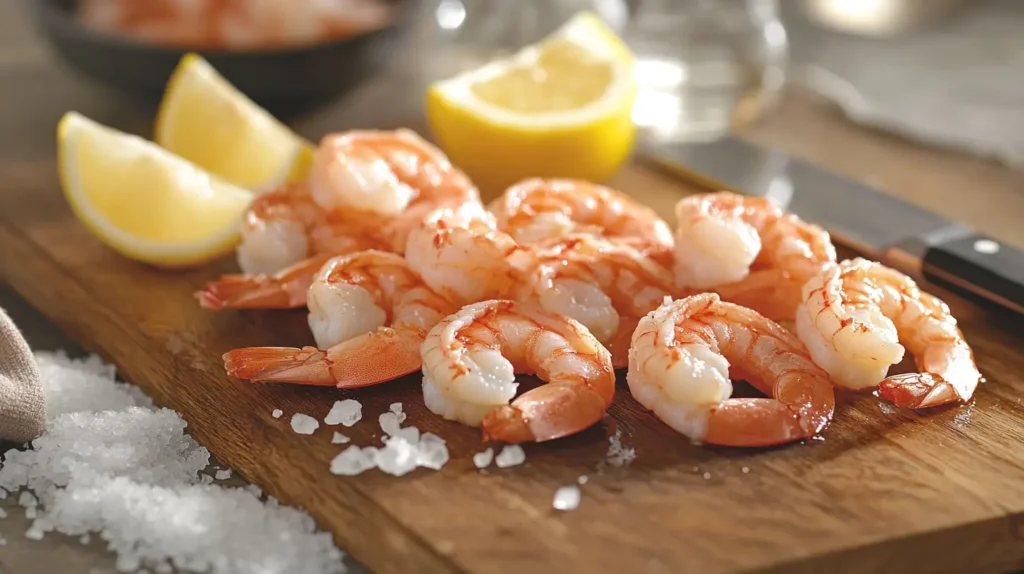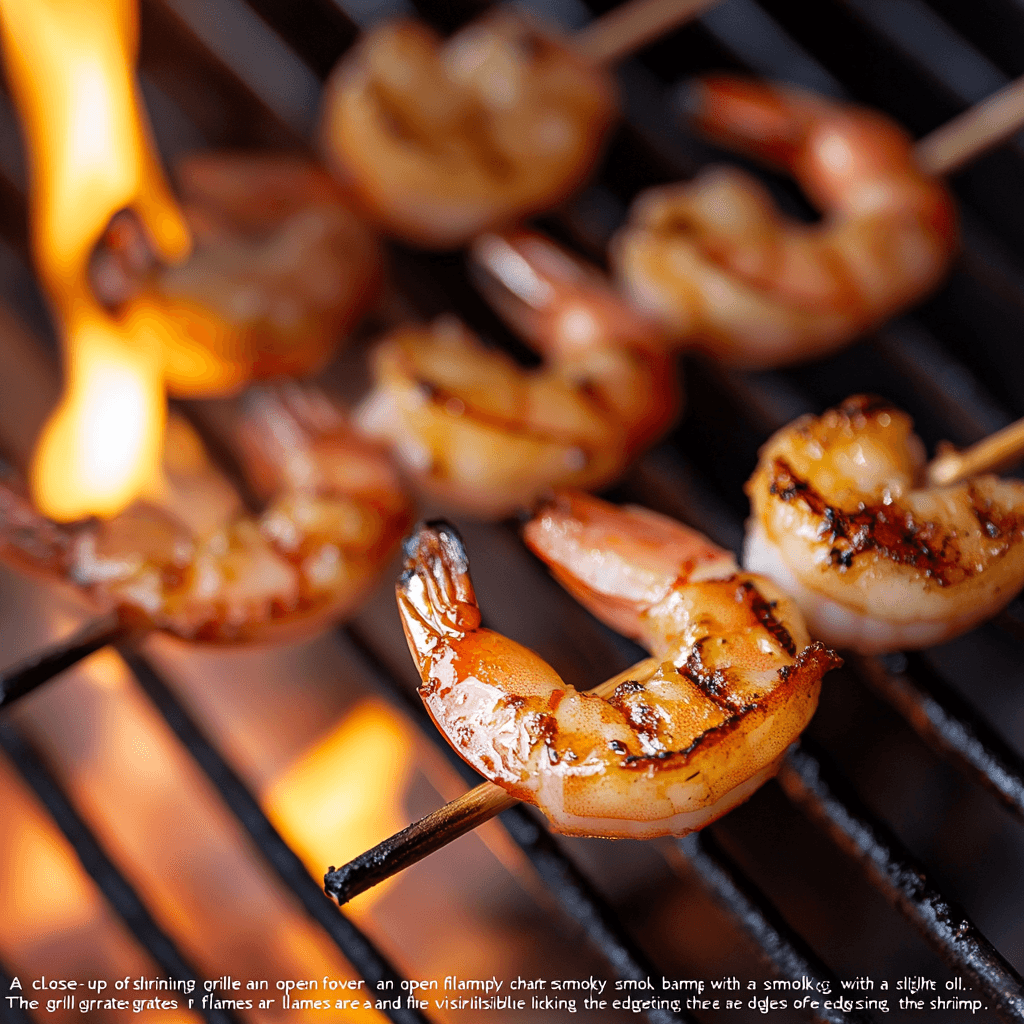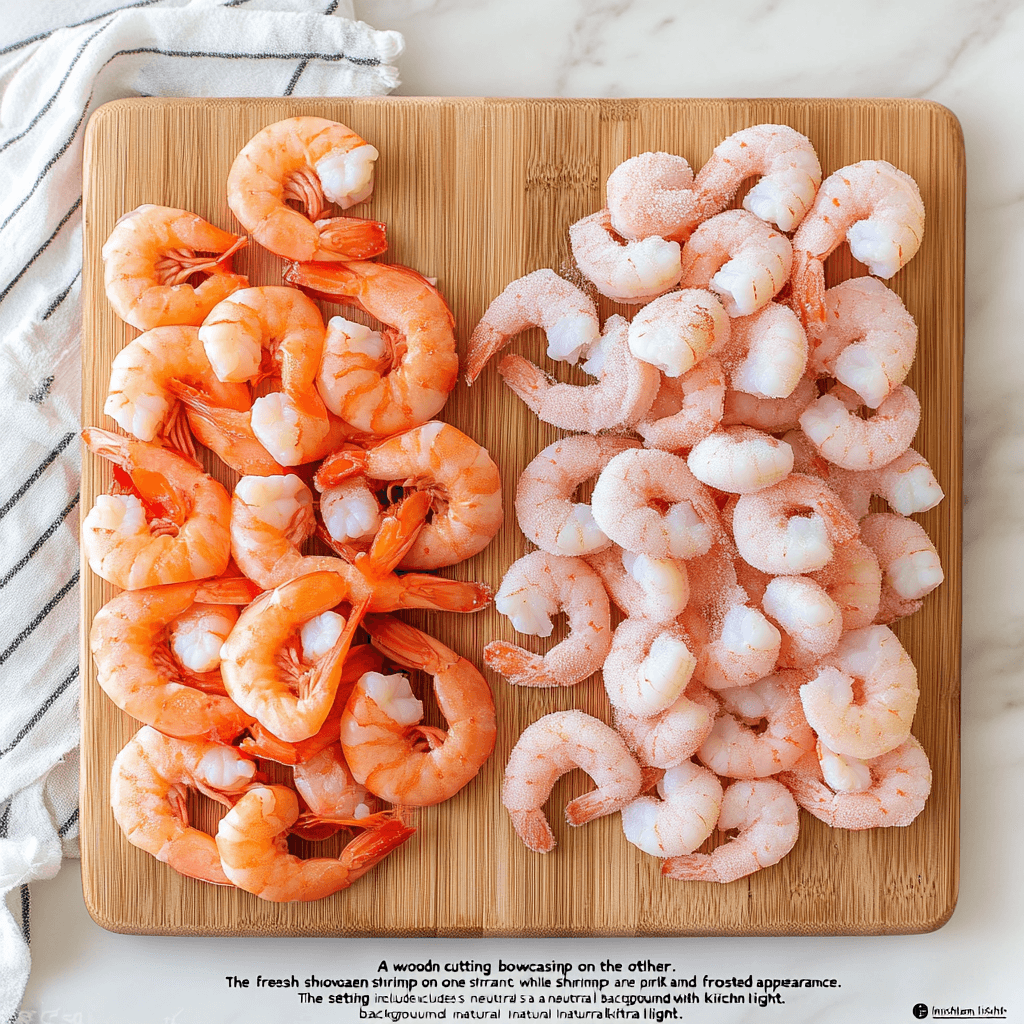
What Makes Shrimp Unique?
Cooking shrimp is an art that combines simplicity with culinary versatility, making it a favorite among seafood lovers worldwide. Known for its mildly sweet flavor, tender texture, and quick preparation time, cooking shrimp is a delightful experience. Whether you’re grilling, boiling, or sautéing, mastering the basics of cooking shrimp opens up a world of delicious possibilities in your kitchen. With the right techniques, cooking shrimp ensures that each bite is juicy, flavorful, and perfectly tender. From classic garlic butter shrimp to spicy Cajun creations, cooking shrimp can be adapted to suit a variety of cuisines and personal tastes.
What sets shrimp apart is their quick cooking time. They can be prepared in just a few minutes, making them an ideal choice for quick meals. Additionally, shrimp absorb flavors remarkably well, allowing them to shine in diverse cuisines, from spicy Asian dishes to hearty Italian pasta.
Shrimp are also unique in their anatomy, with their shell, tail, and vein (a digestive tract that needs cleaning). Understanding these elements is crucial for proper preparation and ensuring the best taste and presentation.
Table of Contents
Nutritional Value of Shrimp
Shrimp is not just delicious but also highly nutritious. It’s a rich source of lean protein, essential for muscle building and repair. A single 3-ounce serving of shrimp contains around 20 grams of protein, making it a powerhouse for those on high-protein diets.
In addition to protein, shrimp is low in calories and fat, which makes it a heart-healthy choice. It contains omega-3 fatty acids that support cardiovascular health and brain function. Shrimp is also an excellent source of key vitamins and minerals, such as:
- Vitamin B12: Supports energy production and neurological health.
- Selenium: A powerful antioxidant that aids in protecting cells from damage.
- Zinc: Strengthens the immune system and promotes wound healing.
- Iodine: Crucial for thyroid function and metabolism.
Despite these benefits, it’s important to consume shrimp in moderation, especially for those watching their cholesterol intake, as shrimp is relatively high in dietary cholesterol. However, research suggests that the cholesterol in shrimp has less impact on heart health than previously thought, making it a nutritious option for most people.
By understanding the unique qualities and nutritional value of shrimp, you can better appreciate and enjoy this seafood favorite in your culinary adventures.
Factors Influencing Your Choice
Convenience
Convenience is often a major factor in deciding whether to use frozen or thawed shrimp. Frozen shrimp offers unmatched flexibility, allowing you to store it for months and use it whenever needed. This makes it a great option for meal prep, busy schedules, or last-minute cooking. You can buy frozen shrimp in bulk, saving time and money by reducing frequent trips to the grocery store.
On the other hand, cooking shrimp that has been thawed is ideal for those who need seafood immediately and don’t have time to defrost it. Thawed shrimp is ready to use straight out of the package, making cooking shrimp a quick and convenient option for same-day meals. However, thawed shrimp has a shorter shelf life and requires immediate preparation to avoid spoilage. For those looking for long-term storage, frozen shrimp might be a better choice, but for immediate use, cooking shrimp with thawed seafood offers maximum freshness and flavor.
Flavor and Texture Differences

When it comes to flavor and texture, both frozen and thawed shrimp have their own merits. Properly frozen shrimp, especially when flash-frozen at peak freshness, retains much of its original flavor and texture. However, improper thawing or refreezing can compromise its quality, leading to mushy or less flavorful results.
Thawed shrimp, whether freshly defrosted or purchased pre-thawed, generally delivers a fresher taste and firmer texture when cooked promptly. This can make it more appealing for delicate recipes that rely on shrimp’s natural sweetness and succulence. However, pre-thawed shrimp purchased from a seafood counter may not always be as fresh as it appears, depending on how it was handled and stored.
Ultimately, your choice between frozen and thawed shrimp depends on your priorities. If you value long-term storage and flexibility, frozen shrimp may be the better option. If flavor and texture are paramount and you plan to cook immediately, thawed shrimp might be the way to go. Understanding these differences can help you make the best decision for your cooking needs.
How Freezing Affects Shrimp Quality
Freezing Techniques
The quality of frozen shrimp largely depends on the freezing technique used. Modern freezing methods, such as flash freezing, are highly effective in preserving the shrimp’s texture, flavor, and nutritional value. Flash freezing involves rapidly cooling shrimp at extremely low temperatures shortly after harvest, which minimizes the formation of large ice crystals that can damage the shrimp’s cells. This method locks in freshness, ensuring that the shrimp remains as close to its original state as possible when thawed.
Another commonly used technique is brine freezing, where shrimp is immersed in a saltwater solution before being frozen. This process helps maintain the shrimp’s moisture and texture, but it may also add a slight briny flavor, which can be desirable for some recipes.
Proper packaging also plays a critical role in maintaining shrimp quality during freezing. Shrimp should be tightly sealed to prevent freezer burn, which occurs when air comes into contact with the surface and dehydrates the shrimp, resulting in a dry and unappealing texture.
Does Freezing Impact Taste?
Freezing does have an impact on taste, but the extent depends on how the shrimp was handled and stored. High-quality shrimp that has been flash-frozen soon after harvesting generally retains its natural sweetness and flavor. However, shrimp that has been improperly frozen or thawed multiple times may develop a bland taste and rubbery texture due to moisture loss.
Another factor to consider is the shrimp’s freshness before freezing. Shrimp frozen at peak freshness will taste better than shrimp that was not stored promptly after being caught. Additionally, frozen shrimp may absorb flavors from other items in the freezer if not properly sealed, which can negatively affect its taste.
Despite these potential drawbacks, the taste difference between fresh and properly frozen shrimp is minimal for most people. When cooked correctly, high-quality frozen shrimp can deliver the same delicious flavor as fresh shrimp, making it a reliable and convenient option for seafood lovers.
Benefits of Cooking Shrimp from Frozen
Time-Saving Benefits
Cooking shrimp directly from its frozen state offers significant time-saving advantages. Unlike other proteins that require lengthy thawing, cooking shrimp from frozen allows you to skip the waiting time and get straight to preparing your meal. Frozen shrimp can be cooked straight from the freezer, making cooking shrimp an excellent option for busy cooks or last-minute meals. With just a few minutes of cooking, you can enjoy delicious, tender seafood without the hassle of advance planning.
Many recipes are specifically designed for frozen shrimp, allowing you to skip the thawing process altogether. Methods like boiling, steaming, or sautéing work especially well with frozen shrimp, as the heat gently defrosts and cooks the shrimp simultaneously. This streamlined process not only saves time but also ensures that the shrimp retains its natural moisture, delivering juicy and tender results.
Maintaining Freshness During Freezing
One of the primary benefits of cooking shrimp from frozen is the ability to preserve its freshness. Frozen shrimp is typically flash-frozen shortly after harvest, locking in its peak flavor, texture, and nutritional value. By cooking it directly from the freezer, you bypass potential risks of quality degradation associated with improper thawing.
Freezing also acts as a natural preservative, keeping the shrimp free from bacterial growth until it’s ready to be cooked. This helps ensure food safety and extends the shrimp’s shelf life, making it a reliable option for long-term storage without sacrificing quality.
Cooking shrimp from frozen can also minimize the risk of overhandling, which is common during thawing. Overhandling may lead to texture changes or a loss of flavor, but cooking shrimp straight from the freezer helps preserve its natural juiciness. By cooking shrimp from frozen, you can enjoy seafood that tastes as fresh as the day it was frozen, with the added convenience of minimal preparation and maximum flavor.
In summary, cooking shrimp from frozen is a practical and efficient method that combines convenience, safety, and quality. It’s a perfect solution for those looking to enjoy delicious, fresh-tasting seafood without the extra steps of thawing.
Benefits of Cooking Thawed Shrimp
Enhanced Flavor
Cooking shrimp after thawing enhances its flavor, providing more flexibility in seasoning and marinating. Thawed shrimp can be thoroughly coated with spices, herbs, or marinades, allowing the flavors to penetrate deeply into the meat. This makes cooking shrimp ideal for recipes that rely on bold or complex seasonings, as the shrimp fully absorbs the flavors before cooking shrimp to perfection.
Freshly thawed shrimp often retains its natural sweetness and briny taste, which can shine in simple recipes that highlight the seafood’s intrinsic qualities. Additionally, thawed shrimp tends to cook faster than frozen shrimp, reducing the risk of overcooking and preserving its delicate flavor profile.
More Even Cooking
One of the most significant advantages of cooking thawed shrimp is the ability to achieve more even cooking. When shrimp is cooked directly from frozen, the outer layers may cook faster than the center, potentially leading to uneven texture or overcooking. Thawing the shrimp beforehand ensures that it cooks uniformly, resulting in a tender, juicy texture throughout.
Thawed shrimp is particularly ideal for cooking methods like grilling, sautéing, or frying, where precise and consistent heat is crucial. Uniform cooking also enhances the presentation of the dish, as the shrimp maintains a plump and appealing appearance.
By starting with thawed shrimp, you can better control the cooking process and deliver perfectly cooked seafood every time. Whether you’re preparing a delicate shrimp scampi or a bold stir-fry, thawed shrimp provides the foundation for delicious and evenly cooked meals.
Best Cooking Methods for Frozen Shrimp

Boiling Shrimp from Frozen
Boiling shrimp directly from frozen is one of the simplest and most effective cooking methods. This technique ensures even cooking while preserving the shrimp’s natural juiciness and texture. Here’s how to do it:
- Prepare the Water: Fill a large pot with water and bring it to a rolling boil. For added flavor, you can season the water with salt, pepper, garlic, lemon slices, or bay leaves.
- Add the Frozen Shrimp: Once the water is boiling, add the frozen shrimp directly into the pot. Stir gently to prevent them from clumping together.
- Cook Briefly: Shrimp cook quickly, even from frozen. Depending on their size, they typically take 3–6 minutes. You’ll know they’re done when they turn opaque and pink, with the tails curling slightly.
- Drain and Serve: Remove the shrimp from the boiling water, drain them, and serve immediately. They can be enjoyed plain, dipped in sauce, or added to recipes like salads and pasta.
Grilling Frozen Shrimp
Grilling frozen shrimp is another excellent option, especially for adding a smoky, charred flavor to the seafood. While grilling frozen shrimp requires slightly more attention to prevent overcooking, it delivers a delightful result. Follow these steps:
- Preheat the Grill: Heat your grill to medium-high to ensure it’s hot enough to sear the shrimp.
- Prep the Shrimp: If the shrimp are not already peeled, consider grilling them with the shells on to protect the meat and lock in moisture. Lightly brush the shrimp with olive oil to prevent sticking.
- Grill from Frozen: Place the frozen shrimp directly onto the grill grates or skewer them for easier handling. Cook for 2–3 minutes per side, flipping once. The shrimp are ready when they’re opaque, pink, and slightly charred.
- Season After Grilling: Since frozen shrimp doesn’t absorb marinades as well, season them with salt, pepper, or a squeeze of lemon after grilling for a burst of flavor.
Grilling frozen shrimp is perfect for quick meals, appetizers, or barbecue gatherings. It pairs beautifully with side dishes like grilled vegetables, rice, or salads.
These methods highlight the convenience and versatility of cooking shrimp straight from the freezer, ensuring delicious results every time.
Frequently Asked Questions (FAQs)
Can I cook shrimp straight from frozen?
Yes, you can cook shrimp straight from frozen. Cooking frozen shrimp is both safe and convenient, saving you time without compromising quality when done properly. Common methods for cooking frozen shrimp include boiling, steaming, or sautéing. These methods simultaneously defrost and cook the shrimp, ensuring it is tender and flavorful.
Chicken and Shrimp Recipes
Chicken and shrimp pair wonderfully in many recipes, combining the hearty flavor of chicken with the delicate sweetness of shrimp. Popular dishes include chicken and shrimp stir-fries, creamy chicken and shrimp pasta, and Cajun-style jambalaya. These versatile proteins work well together in various cuisines, offering a balance of flavors and textures.
Can you cook shrimp and chicken together?
Yes, you can cook shrimp and chicken together, but it’s important to consider their different cooking times. Chicken generally takes longer to cook than shrimp, so it’s best to start cooking the chicken first and add the shrimp towards the end of the process. This ensures both proteins are cooked to perfection without overcooking the shrimp.
Does freezing kill bacteria in shrimp?
Freezing slows down bacterial growth but does not kill all bacteria in shrimp. Harmful bacteria can remain dormant while the shrimp is frozen and become active again once it’s thawed. To ensure food safety, handle shrimp properly, cook it to the correct internal temperature (145°F or 63°C), and avoid refreezing previously thawed shrimp.
What is the best way to thaw shrimp?
The best way to thaw shrimp is to place it in the refrigerator overnight. This slow and controlled thawing method ensures the shrimp retains its texture and freshness. If you need to thaw shrimp more quickly, you can run it under cold running water in a colander for 10–15 minutes. Avoid using hot water or leaving shrimp out at room temperature to thaw, as this can encourage bacterial growth.
Are there any risks to cooking frozen shrimp?
Cooking frozen shrimp is generally safe, but there are a few risks to consider. If not cooked properly, the outer layers may overcook while the center remains undercooked. To avoid this, use cooking methods that apply even heat, such as boiling or steaming. Additionally, ensure the shrimp reaches a safe internal temperature of 145°F (63°C) to eliminate any potential bacteria. Properly handling and storing shrimp before cooking also minimizes risks.
Conclusion: Making the Right Choice

Summarizing the Pros and Cons
When deciding between frozen and thawed shrimp, or how to prepare shrimp, both options offer distinct advantages depending on your needs and preferences:
- Frozen Shrimp
- Pros: Long shelf life, convenience, ready to use at any time, retains freshness through flash freezing, cost-effective.
- Cons: Requires proper thawing for certain recipes, may lead to uneven cooking if not handled properly.
- Thawed Shrimp
- Pros: Enhanced flavor absorption, more even cooking, ideal for grilling, sautéing, and recipes requiring delicate preparation.
- Cons: Short shelf life, requires immediate cooking to avoid spoilage.
For cooking methods, frozen shrimp are perfect for boiling or grilling straight from the freezer, while thawed shrimp excel in sautéing or baking due to better seasoning and even cooking.
Final Recommendation
The best choice depends on your priorities:
- Choose Frozen Shrimp if you value convenience, long-term storage, and the ability to cook on short notice. This option is ideal for busy cooks and those looking for flexibility in meal planning.
- Choose Thawed Shrimp if you want the best flavor, texture, and cooking precision. This is the better option for dishes that require delicate handling or intricate seasoning.
Ultimately, both frozen and thawed shrimp can yield delicious results when handled and cooked correctly. Whether you prioritize convenience or culinary finesse, understanding the unique qualities of each option ensures you make the right choice for your meal.
